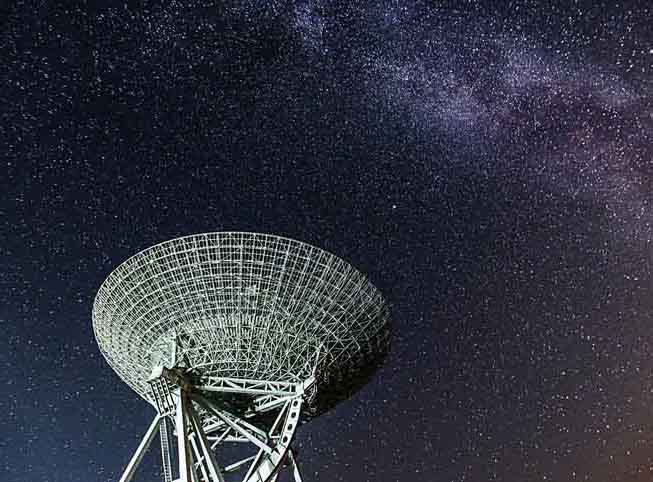Searching Deep Space via Optical Fiber
Leave a Comment For the first time, researchers have shown that a stable frequency reference can be reliably transmitted for more than 300 kilometers over a standard fiber optic telecommunications network in order to synchronize two radio telescopes.
For the first time, researchers have shown that a stable frequency reference can be reliably transmitted for more than 300 kilometers over a standard fiber optic telecommunications network in order to synchronize two radio telescopes.
In The Optical Society of America’s Optica journal, researchers from a consortium of Australian institutions recently reported this successful transmission between two radio telescopes using an optical fiber link. They also demonstrated that the technique’s performance was superior to using an atomic clock at each telescope.
Stable frequency references, used to calibrate clocks and instruments that make ultra-precise measurements, are usually only available at facilities that use expensive atomic clocks to generate the references. This new technology could help scientists anywhere to access the frequency standard by simply tapping into the telecommunications network.
This new technique required no substantial changes to the rest of the fiber optic network and was easy to implement. Most impressively, the demonstration was performed over a fiber optic network that was transmitting live telecommunications traffic at the same time. By running the experiment on optical fibers carrying normal traffic, the researchers showed that transmitting the stable frequency standard did not affect the data or telephone calls on other channels. (more…)
Breakthrough Fiber Optic Laser May Revolutionize the Detection of Gases for Industry
Leave a Comment An international research group has developed a world-first fiber optic technology which may help detect a wide range of gases with unprecedented sensitivity. Published in the journal Optica, the discovery involves the creation of a fiber optic device which consists of an invisible infrared laser coupled to an ultra-broadband supercontinuum generator – two elements that researchers have never managed to combine into a single optical system before. Led by Macquarie University scientists in Australia, the group believes that potential applications for this technology range from breath analysis to air-quality monitoring.
An international research group has developed a world-first fiber optic technology which may help detect a wide range of gases with unprecedented sensitivity. Published in the journal Optica, the discovery involves the creation of a fiber optic device which consists of an invisible infrared laser coupled to an ultra-broadband supercontinuum generator – two elements that researchers have never managed to combine into a single optical system before. Led by Macquarie University scientists in Australia, the group believes that potential applications for this technology range from breath analysis to air-quality monitoring.
According to lead researcher Dr. Darren Hudson of Macquaraie University, “This new supercontinuum technology is capable of being used to detect an array of gases, including methane, carbon dioxide and nitrous oxide – gases that can be harmful to humans in high levels and have implications in climate change.”
Over the past decade, researchers around the globe have worked to create high-brightness sources of infrared light – an invisible form of light that sits just beyond visible red light in the spectrum. While this work has revolutionized how we detect and measure a staggering range of molecules, the current technology still requires large laser systems, optical laboratory conditions and an expert operator. (more…)

